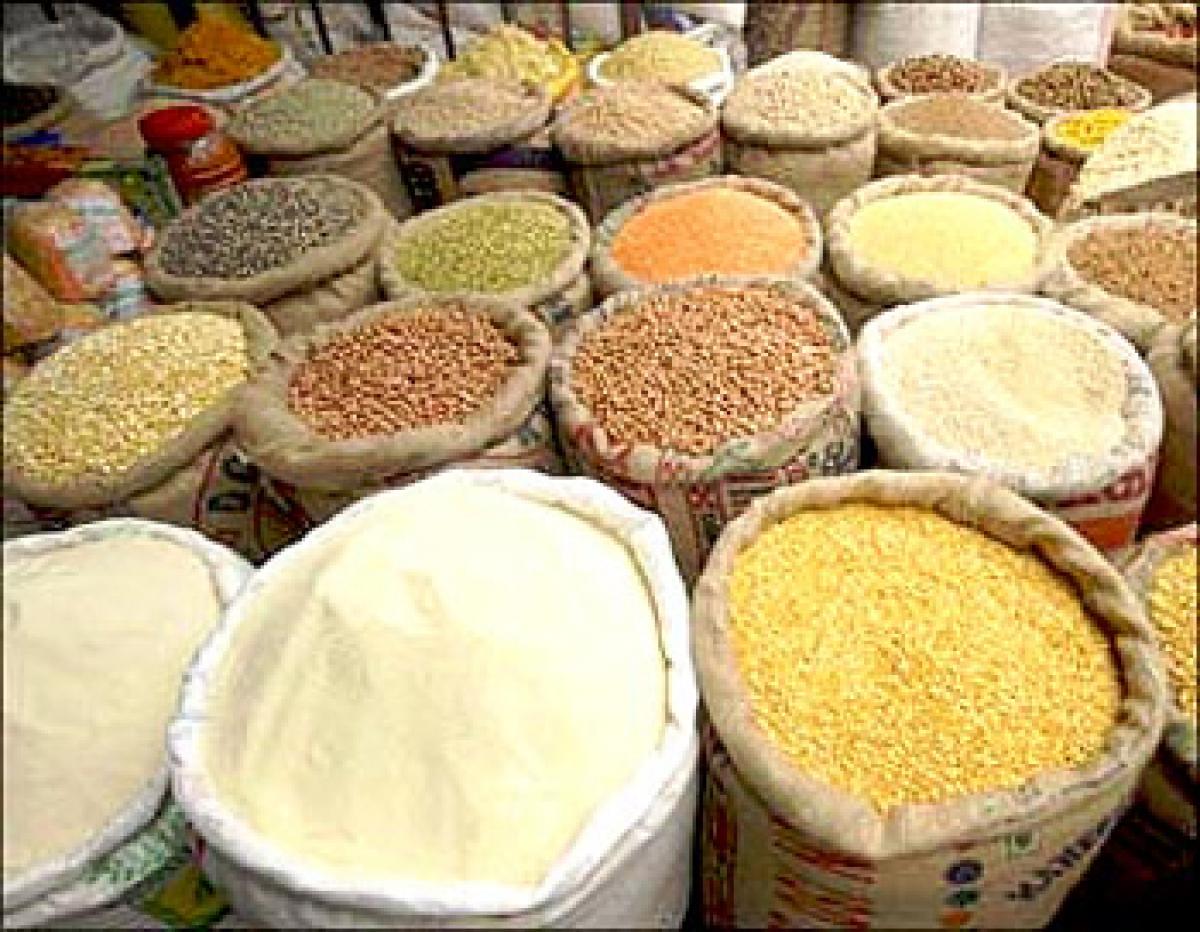Live
- Bengal: Senior resident doctor accused of rape, attempt to murder absconding
- Prateeksha Srivastava says she seldom meets fellow music composers Rusha, Blizza, in person
- KTR Accuses Government of Brutality Against Farmers, Calls for Immediate Action
- Manchu Manoj Attends Shooting Amid Family Controversy
- BWF World Tour Finals: Treesa-Gayatri defeat Malaysian pair to keep semis hopes alive
- MUDA case: Complainant Krishna asks Lokayukta to file new plaint on CM Siddaramaiah on ED’s report
- Airport capex in India to cross Rs 60,000 cr in fiscals 2025-2027 to handle growing traffic: Crisil
- Five-Year-Old Boy Dies After 55-Hour Rescue from Borewell in Rajasthan's Dausa
- Chaos in Parliament over Congress-George Soros link claims, BJP MP poses questions
- Bus Driver Arrested After Deadly Accident in Mumbai’s Kurla; 42 Injured
Just In

Brace up to weather a weak monsoon. With monsoon accounting for 75 per cent of India\'s rains and over half of the farm sector\'s water needs, forecast of a 12 per cent deficit this year with near 100 per cent probability demands urgent planning and measures to cushion its fall-out.
 What worries economists is that the government can only calm the prices of rice and wheat, using stocks in its coffers. It has little control over other commodities like pulses, oilseeds, fruits and vegetables
What worries economists is that the government can only calm the prices of rice and wheat, using stocks in its coffers. It has little control over other commodities like pulses, oilseeds, fruits and vegetables
With monsoon accounting for 75 per cent of India's rains and over half of the farm sector's water needs, forecast of a 12 per cent deficit this year with near 100 per cent probability demands urgent planning and measures to cushion its fall-out. It was not without reason President Pranab Mukherjee called monsoon “the real Finance Minister of India” when he held the portfolio. The farm sector's direct contribution to GDP may have declined now to around 15 per cent. But its overall impact on the economy is telling.
Little wonder the central bank lowered its growth forecast to 7.6 per cent from 7.8 per cent, and that too based on the previous monsoon outlook of the Indian Meteorological Department (IMD) that had predicted 7 per cent shortfall – which has now been scaled up to a 12 per cent shortfall. If the rains are poor, obviously there will be a shortfall in farm yield and result in prices mounting. This will result in consumers spending more on food. This, in turn, will pull down the spend on other commodities.
Says Abhirup Sarkar, an economist with Indian Statistical Institute in Kolkata: “Let us not forget this could be the second continuous year of scanty rains. As a result, even those states, like Punjab, Haryana and Uttar Pradesh, which have a good irrigation system, can face the brunt. Another noted economist, Dipankar Dasgupta, fears that while the incomes of middlemen in the farm economy will rise substantially, farmers will be under further stress. "In fact hoarding of agro produce has already started in anticipation of supply-side shortages," he observes.
This apart, as per the agriculture ministry's latest advance estimate for the 2014-15 season (July-June), grain production in the country is forecast at 251.12 million tonnes – nearly 14 million tonnes lower than the previous year's record production of 265.04 million tonnes. This is also because unseasonal rain in the early months of this year hit the rabi crop for which sowing begins in November and the crop, especially wheat, is harvested in April-May. Now, deficit rains also raise the fears over the kharif crop, with sowing due in June.
It's not that the government hasn't been pre-warned. But it feels the worries are misplaced. "What is clear is contingency plans for food management, including storage of adequate quantity of seeds and fertilisers, crop insurance, credit and timely release of stocks need to be in place to manage the impact of low output on inflation," Reserve Bank Governor Raghuram Rajan said.
The government's response: "If there are poor rains, there will obviously be some losses in the agriculture sector. But we have the confidence and policies in place to ensure there is minimum damage," Agriculture Minister Radha Mohan Singh said. But what worries economists is that the government can only calm the prices of rice and wheat, using stocks in its coffers. It has little control over other commodities like pulses, oilseeds, fruits and vegetables. "As a result, the overall inflation might face upward pressure. In the new consumer price index (CPI) series, cereals and pulses have a 12.1 percent weight, while fruits & vegetables have 8.9 per cent," said ratings agency Crisil.
What comes as added worry is industry is yet to stage a full recovery from the woes since 2008“We now expect the revival in consumption to be lower than estimated earlier,” said Crisil. But it also saw a ray of hope. "Inflation will be the saving grace, and we also expect the recent interest rate cuts to lead to a mild consumption pick up," the agency said. Amid all this debate, Skymet, an independent weather monitoring and agri-risk solutions company, has said the rains for India during the monsoon season this year (June to September) will be 102 percent of the long-term average.
Taking note of this prediction, and also the way monsoon notmally progresses across India, ICICI Securities said it is the timing and spatial distribution of rainfall, which will determine its impact on the domestic rural economy. "Therefore, it is too early to press the panic button based upon any monsoon predictions. It is the distribution of monsoon across the season as well as regions, which is to be watched while gauging its impact on domestic agri gross domestic product."
By Arvind Padmanabhan and Avishek Rakshit

© 2024 Hyderabad Media House Limited/The Hans India. All rights reserved. Powered by hocalwire.com







